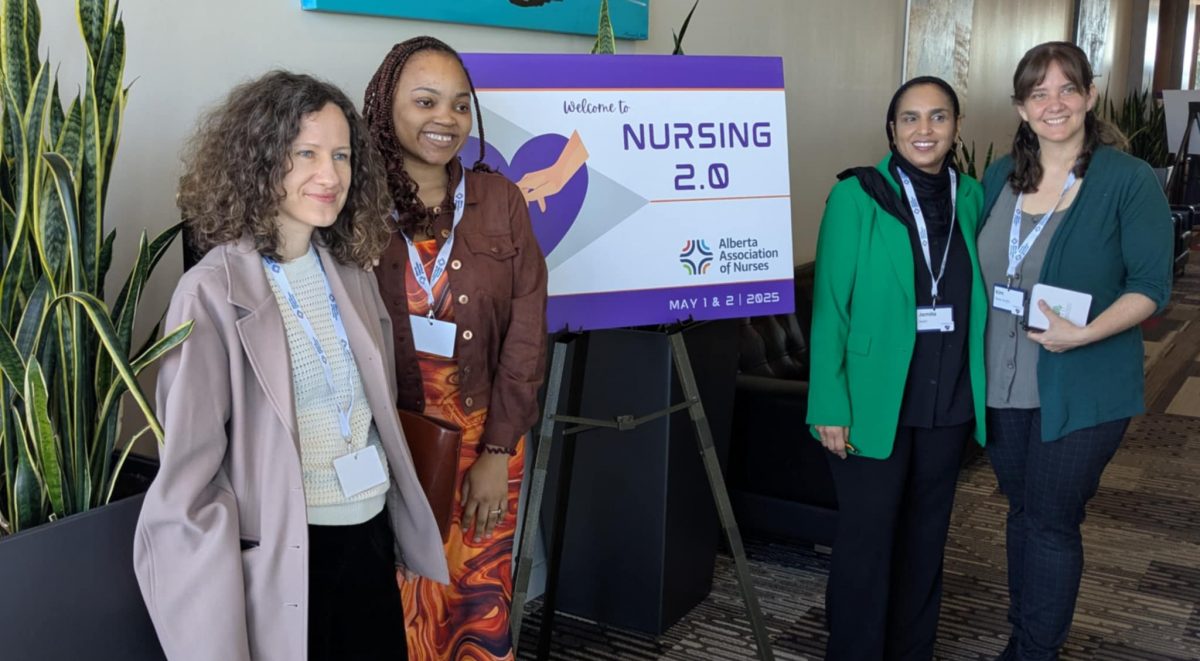
Nursing 2.0 – Conference Highlights
The Alberta Association of Nurses’ third annual conference, Nursing 2.0, on May 1 & 2 was more than a gathering of nurses—it was a jolt of infectious energy and bold hope from nurse leaders, innovators, and advocates.
As we look into the not-too-far-future where the integration of AI, virtual care, and the use of tools such as VR are integrated into daily health practice, it was clear that nurses’ voices and vision will be leading the charge to reimagine the future of healthcare.
The theme, how nurses are bridging the heart of care to tomorrow’s technology, drove the conversation between presenters: how the human element of nursing—compassion, connection, and individualized care—can be harmonized with emerging technologies, such as artificial intelligence, telehealth, and robotics/bots, to create a more efficient and person-focused healthcare environment.
One of the highlights of Nursing 2.0 was the keynote address delivered by Dr. Zayna Khayat, a health futurist. Dr. Khayat’s presentation, The Future of Health(care) = The Future of Nursing, explored the need for the healthcare system to shift from reactive treatment to preventative, proactive and predictive models of care.
She encouraged nurses to use data and AI to experiment “with like-minded rebels” and break the constraints of our existing static infrastructure (e.g. people, equipment, physical location). Technology has made vast amounts of health data available not only to health providers, but also to clients and communities at home, and it has the potential to revolutionize the accuracy and accessibility of healthcare.
“Today, our healthcare is systems focused,” Khayat said. “In the future, our healthcare system will be person focused.”
Your watch can track health data unheard of even a decade ago. The data-rich health information that is now available to everyone via their devices is creating a way to proactively track your own care, predict health issues, and even use algorithms to ‘troubleshoot’ care at home.
Khayat emphasized that nurses are the innovators and disruptors who are uniquely positioned to lead this shift. Nurses’ expertise in assessing and understanding patients’ needs, the compassion, the empathy, is what technology is creating more time and space for. “AI will free up our time to be more brilliant and less inaccurate. It will free up time to have more access to humans.”
The conference featured a variety of thought-provoking sessions, offering attendees the opportunity to explore medical technologies and their practical applications within nursing such as virtual reality simulation-based learning, digital distraction methods in emergency rooms, and the role of genomics-informed healthcare. These discussions helped to demystify the potential of these, and future, innovations.
Kathy Howe, AAN CEO, ending keynote speaker, spoke on how nurses need to build resilient mindsets to ensure ongoing success and impact now and into the future. While no one wants to experience hardships, they are an inevitability of life, and how you choose to face them will determine your resilience and growth.
“The adversity in your life will help you become more resilient,” Kathy encouraged. “Resiliency is something you can choose.”
As the conference came to a close, Nursing 2.0 ended with a call to action for nurses to disrupt broken systems and ways of working, and to lift each other up as nurses across designations to become a stronger profession.
Khayat closed her presentation by calling with upraised hand to the attentive crowd, “Create the future, and do not protect the past.”
